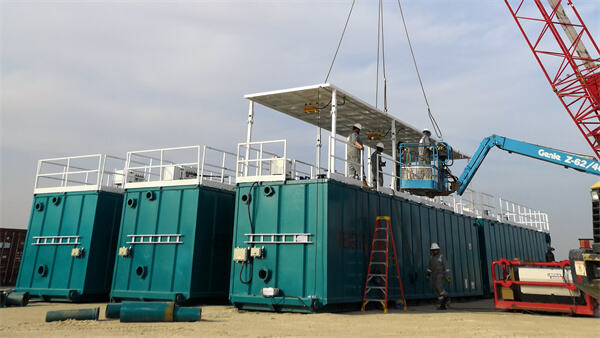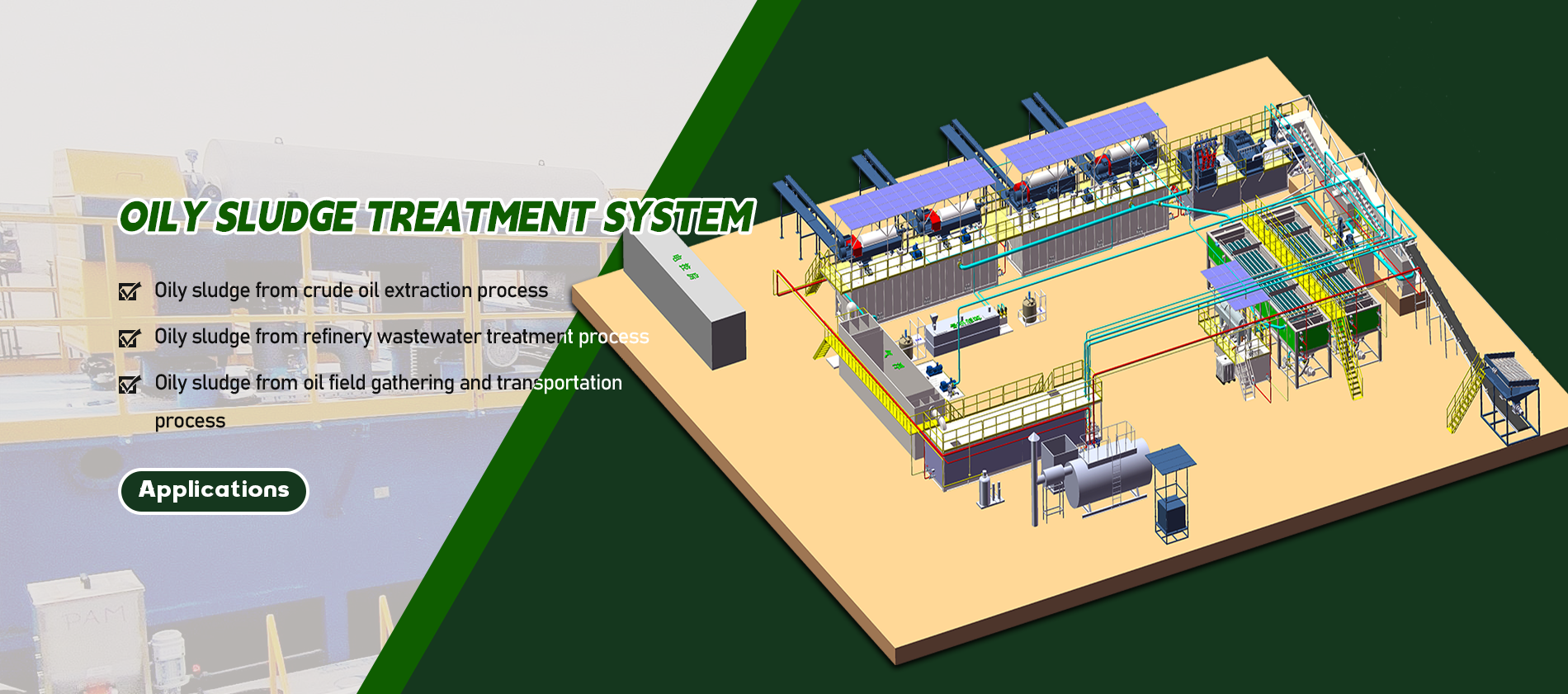Արդյունաբերական յուղոտ թափոնների կառավարման բարդությունների հասկացությունը
Արդյունաբերական հաստատությունները ամբողջ աշխարհում մեծ մարտահրավերների են ենթարկվում, երբ գործ ունեն երկար Կանգնած Օդանավների Կառավարում , որը շրջակա միջավայրի համապատասխանության և գործողությունների արդյունավետության կարևոր կողմ է: Այս վտանգավոր երկրորդային արտադրանքը, որը ձևավորվում է տարբեր արդյունաբերական գործընթացների ընթացքում, պահանջում է հատուկ սպասարկում և մշակման մեթոդներ՝ ճիշտ վտարման համար, միաժամանակ համապատասխանելով խիստ շրջակա միջավայրի կանոններին: Յուղոտ թթվի բաղադրության բարդությունը, որը տարբերվում է հաստատությունից հաստատություն, պահանջում է բարդ մշակման մոտեցումներ, որոնք կարող են արդյունավետ կերպով բաժանել յուղը, ջուրը և պինդ մասերը՝ նվազագույնի հասցնելով շրջակա միջավայրի վրա ունեցած ազդեցությունը:
Հիմնական մշակման տեխնոլոգիաներ և մեթոդներ
Տերմինալ Դեսորբցիայի Սիստեմներ
Ջերմային դեսորբցիան համարվում է յուղոտ տեղամասերի մշակման ամենաարդյունավետ մեթոդներից մեկը, որն օգտագործում է վերահսկվող ջերմություն՝ տարբեր բաղադրիչները իրարից առանձնացնելու համար: Այս տեխնոլոգիան աշխատում է տեղամասը 200-600°C ջերմաստիճանի վրա տաքացնելով, որի արդյունքում ջուրը և հիդրոկարբոնները գոլորշիանում են, իսկ մշակված պինդ մնացորդները մնում են հետևում: Այս գործընթացը հատկապես արդյունավետ է բարձր յուղի պարունակությամբ տեղամասերի համար, սակայն վնասակար արտանետումների առաջացումը կանխելու համար անհրաժեշտ է խիստ վերահսկել ջերմաստիճանը:
Ժամանակակից ջերմային դեսորբցիայի սարքերը հագեցած են առաջադեմ հսկման համակարգերով և արտանետումների վերահսկման միջոցներով, որոնք ապահովում են ինչպես մշակման արդյունավետությունը, այնպես էլ շրջակա միջավայրի նկատմամբ պահանջների կատարումը: Վերականգնված յուղը հաճախ կարող է վերաշրջվել արտադրական գործընթացի մեջ, ինչը ստեղծում է ավելի կայուն շրջանառություն:
Ցենտրիֆուգացում և Մեխանիկական առանձնացում
Ցենտրոնախույսային առանձնացման տեխնոլոգիան հիմնարար նշանակություն ունի յուղոտ նստվածքների մշակման գործում՝ առաջարկելով մեխանիկական միջոց, որը հնարավորություն է տալիս առանձնացնել տարբեր ֆազեր խտության տարբերությունների հիման վրա: Բարձր արագությամբ ցենտրոնախույսները կարող են արդյունավետ մշակել նստվածքների մեծ ծավալներ, առանձնացնելով յուղը, ջուրը և պինդ մասնիկները՝ ստանալով առանձին հոսքեր հետագա մշակման կամ վերականգնման համար:
Ռեվոլյուցիոն եռաֆազ ցենտրոնախույսները փոխակերպել են մշակման գործընթացը՝ հնարավորություն տալով առանձնացումն իրականացնել մեկ փուլով, ինչը զգալիորեն կրճատում է մշակման ժամանակն ու շահագործման ծախսերը: Այս համակարգերը կարող են մշակել տարբեր կազմով նստվածքներ և հասնել բարձր առանձնացման արդյունավետության, թեև օպտիմալ աշխատանքի համար կարևոր է ճիշտ սպասարկումը:
Շրջակա միջավայրի հետ համապատասխանություն և կանոնակարգային մարտահարթեր
Թողարկման ստանդարտներին համապատասխանելը
Ճառախիճի մշակմանը վերաբերող էկոլոգիական նորմերը շարունակում են զարգանալ՝ հաստատություններին ավելի խիստ պահանջներ ներկայացնելով: Մշակման համակարգերը պետք է անընդհատ արտադրեն այնպիսի արտահոսք, որը համապատասխանում է տեղական և ազգային արտահոսքի ստանդարտներին, ինչը պահանջում է ուշադիր հսկողություն և գործընթացի վերահսկում: Հաստատությունները պետք է ներդրումներ կատարեն հուսալի փորձարարական սարքավորումների մեջ և պահեն մանրամասն համապատասխանության գրառումներ:
Այս ստանդարտներին համապատասխանելու հաջողությունը հաճախ պահանջում է բազմամակարդակ մշակման մոտեցում՝ տարբեր տեխնոլոգիաների համադրում անհրաժեշտ արդյունքների հասնելու համար: Պարբերաբար նմուշառումն ու վերլուծությունը օգնում են ապահովել համապատասխանությունը՝ միաժամանակ տրամադրելով տվյալներ գործընթացի օպտիմալացման համար:
Արտանետումների վերահսկում և օդի որակի կառավարում
Ճառախիճի մշակման հաստատություններից օդի արտանետումները պահանջում են զգույշ կառավարում՝ համապատասխանելու էկոլոգիական ստանդարտներին և համայնքի հետ լավ հարաբերություններ պահպանելու համար: Ժամանակակից մշակման համակարգերը ներառում են արտանետումների վերահսկման տարբեր տեխնոլոգիաներ՝ ներառյալ ջերմային օքսիդացնողներ, լվացիչներ և առաջադեմ ֆիլտրացիոն համակարգեր:
Օդի արտանետումների անընդհատ հսկողությունը օգնում է հաստատություններին նախապես հայտնաբերել և լուծել հնարավոր խնդիրներ, մինչև դրանք համապատասխանության հարցեր դառնան: Արտանետումների վերահսկման սարքավորումների պարբերական սպասարկումն ապահովում է կայուն աշխատանք և կանոնադրության համապատասխանություն:

Օպերացիոն արդյունավետություն և արժեքի համակարգում
Ռեսուրսների օպտիմալացում
Ճարպոտ տղիների մշակման հաջող գործողությունները պահանջում են մշակման արդյունավետության և շահագործման ծախսերի միջև խիստ հավասարակշռություն: Էներգասպառումը հաճախ զգալի ծախս է ներկայացնում, ինչը դարձնում է արդյունավետության բարելավումը հիմնական կենտրոնացման ոլորտ: Ժամանակակից մշակման համակարգերը ներառում են էներգիայի վերականգնման համակարգեր և օպտիմալացնում են գործընթացային պայմանները՝ ռեսուրսների օգտագործումը նվազագույնի հասցնելու համար:
Ջրի կառավարումը ներառյալ մշակման գործընթացում նույնպես կարևոր դեր է խաղում շահագործման արդյունավետության մեջ: Ջրի վերարտադրման համակարգերի ներդրումը և մշակման պարամետրերի օպտիմալացումը կարող է զգալիորեն կրճատել թարմ ջրի սպառումը և կեղտաջրերի հեռացման ծախսերը:
Սպասարկում և համակարգի հուսալիություն
Շատ կարևոր է շահումային համակարգերի վստահելի աշխատանքը ապահովելու համար կատարել սովորական սպասարկում: Կանխարգելիչ սպասարկման ծրագրերը օգնում են նախազգուշացնել հնարավոր խնդիրներ, որոնք կարող են հանգեցնել համակարգի ձախողմանը կամ համապատասխանության խախտումներին: Օպերատորների վերապատրաստումը ճիշտ սպասարկման ընթացակարգերով և մանրամասն սպասարկման գրառումների պահումը աջակցում է համակարգի երկարաժամկետ վստահելիությանը:
Առաջադեմ մոնիթորինգի համակարգերը և կանխատեսողական սպասարկման տեխնոլոգիաները օգնում են օպտիմալացնել սպասարկման գրաֆիկները և կրճատել անսպասելի անսարքությունները: Համակարգի սպասարկման այս նախաձեռնողական մոտեցումը օգնում է ապահովել բուժման կայուն արդյունավետություն՝ միաժամանակ վերահսկելով ծախսերը:
Ապագայի միտումներ և նորարարություններ
Ավանդական Մշակության Տեխնոլոգիաներ
Շահումային համակարգերի մշակման ոլորտը շարունակում է զարգանալ՝ հայտնվելով նոր տեխնոլոգիաներ և մշակման մոտեցումներ: Բաժանման տեխնոլոգիաներում նորարարությունները, ներառյալ առաջադեմ թաղանթային համակարգերը և նոր քիմիական մշակման մեթոդները, երաշխավորում են բարելավված մշակման արդյունավետություն և նվազագույն ազդեցություն շրջակա միջավայրի վրա:
Կենսաբանական մեթոդների հետազոտությունը ցույց է տալիս հուսադրող արդյունքներ յուղոտ աղբի որոշ տեսակների մշակման համար, որը հնարավորություն է տալիս առաջարկել ավելի կայուն մշակման տարբերակներ: Այս մշակումները ապագայում կարող են հանգեցնել ավելի տնտեսապես շահավետ և շրջակա միջավայրի համար ավելի անվտանգ լուծումների:
Թվային ինտեգրում և գործընթացի կառավարում
Թվային տեխնոլոգիաները փոխակերպում են յուղոտ աղբի մշակման գործողությունները՝ բարելավելով հսկողությունն ու կառավարման հնարավորությունները: Գերազանց զգայիչներն ու կառավարման համակարգերը տրամադրում են իրական ժամանակում տվյալներ մշակման արդյունավետության վերաբերյալ, ինչը թույլ է տալիս օպերատորներին օպտիմալացնել գործընթացները և արագ արձագանքել փոփոխվող պայմաններին:
Արհեստական ինտելեկտի և մեքենայական ուսուցման ինտեգրումը օգնում է նախատեսել օրինաչափություններ և սպասարկման անհրաժեշտությունները, ապահովելով ավելի արդյունավետ գործողություններ: Այս տեխնոլոգիական նվաճումները խոստում են հետագայում բարելավել մշակման արդյունավետությունը՝ նվազեցնելով շահագործման ծախսերը:
Հաճախ տրվող հարցեր
Ո՞ր գործոններն են ազդում յուղոտ աղբի մշակման արդյունավետության վրա
Բուժման արդյունավետությունը կախված է մի շարք հիմնարար գործոններից, ներառյալ նստվածքի բաղադրությունը, ջրի պարունակությունը, պինդ մասնիկների չափի բաշխումը և շահագործման պայմանները, ինչպիսիք են ջերմաստիճանը և պահման ժամանակը: Բուժման տեխնոլոգիայի ընտրությունը և համակարգի ճիշտ սպասարկումը նույնպես զգալիորեն ազդում են ընդհանուր արդյունավետության վրա:
Ինչպե՞ս կարող են հաստատությունները նվազեցնել բուժման ծախսերը՝ պահպանելով համապատասխանությունը:
Ծախսերը նվազեցնելու ռազմավարություններից են էներգիայի օգտագործման օպտիմալացումը, կանխարգելման սպասարկման ծրագրերի իրականացումը, նավթի և ջրի վերականգնումն ու վերամշակումը հնարավորին չափ, և գործընթացի վերահսկման բարելավման համար առաջադեմ հսկման համակարգերի կիրառումը: Կանոնավոր օպերատորական վարժությունները և համակարգի թարմացումները նույնպես կարող են օգնել պահպանել արդյունավետ գործողությունները՝ համոզվելով համապատասխանության մեջ:
Ո՞րն են յուղոտ նստվածքների բուժման վերջին նորարարությունները
Վերջերս մշակվել են առաջադեմ թաղանթային ֆիլտրացման համակարգեր, բարելավված ջերմային դեզորբցման տեխնոլոգիաներ, կենսաբանական մշակման եղանակներ և արհեստական ինտելեկտի ու մեքենայական ուսուցման կիրառություններ ներառող թվային կառավարման համակարգեր: Այս մշակումները նպատակ ունեն բարելավել մշակման արդյունավետությունը՝ նվազեցնելով շրջակա միջավայրի վրա ունեցած ազդեցությունը և շահագործման ծախսերը:

